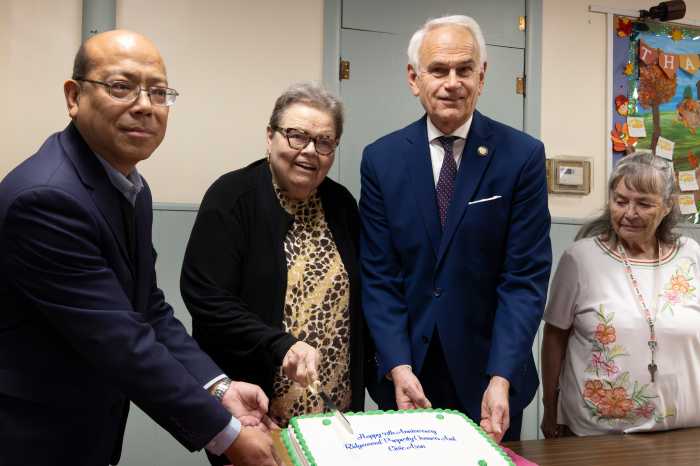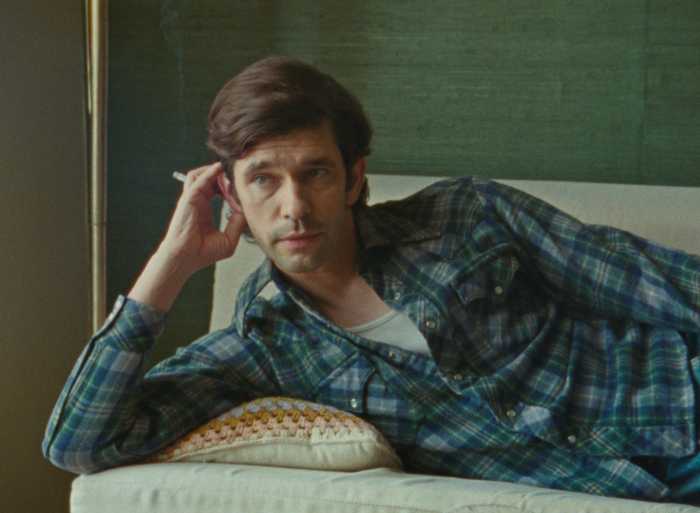By Kate Bobby
Want to be Mr. or Miss Popular? Know the best party games to play with your guests? Do you know what to talk about on your next date? Do you know the three C's behind every pristine credit rating? (For your future reference: Character, Capacity and Capital.)
Well, it's not too late to learn how to become or remain an ideal citizen. There are two more weekends of the “Mental Hygiene” film series, courtesy of Astoria's American Museum of the Moving Image.
“It makes me feel good to see this level of interest in these movies because this series may be the only way you'll get to see these films as they were originally shown,” said Ken Smith, author of the book that corresponds with the AMMI series, “Mental Hygiene: Classroom Films 1945-1970.” (Blast Books, 1999) “Many of these films, because of their age and condition, may only be screened the one time, specifically for this series. It's a rare opportunity.”
Jan. 8, the first day of the AMMI series, also represented a rare opportunity for the film buffs assembled (and there was a full house of them) to enjoy an onstage dialogue between David Schwartz, chief curator at the AMMI, the author, Smith, and the archivist, Rick Prelinger, the man who started it all by collecting these moldy oldies from the get-go. The series, as a result, features cliffhangers such as “The Last Prom,” about boys, essentially decent folks who become speed demons behind the wheel. Or “It's Wonderful Being a Girl,” a film that shines a light on the mysteries of female biology. As well as the subtle message of the helpful short, “Don't Smoke Pot.”
“The people who made these school educational films were essentially businessmen. They weren't going to make films that schools weren't going to buy,” Smith said, explaining that major makers of such movies, such as Coronet and Encyclopedia Britannica, would turn to educational consultants to brainstorm about the messages they needed to send via this brave, new medium.
“Yes there were research teams for these films, which would read textbooks and consult with the educators who ostensibly knew what was on the mind of schoolchildren of the era,” said Smith. “As a result, there existed this significant gap between the films that were made and the audiences for which they were intended.”
Originally, nonetheless, the educational film was viewed as an effective tool of social engineering, devised for a post-World War II society living in the shadow of the atom bomb.
“There wasn't fear of the A-bomb every minute of every day but post-war America was an insecure America,” said Prelinger, who commented that an indirect result of this prevailing fear was an undercurrent of fear against anything deemed somewhat against the grain of mainstream society. “In post-war America, there was this tremendous fear of the unpredictable, the unexpected. These films, at first, were in fact, a very effective way of communicating these unspoken fears.”
“Today, of course, we find such films wonderfully funny. The society reflected in these films is an incredibly naive society and their messages anything but disguised or hidden,” said Smith, explaining that educational films, in their heydey, presented a world or two choices: black and white choices.
“The choices were, 'Live the right way,' or wind up in a rundown hotel room with holes in your clothes,” Smith said.
In closing, Smith and Prelinger concurred that the educational films of today, though perhaps more complex than their predecessors, will still more than likely be studied years from now, regarded as cultural artifacts from yet another era gone by.
“Oh, it will definitely happen. Thirty or so years from now, people will be studying the educational films being made today. And, they'll most likely be laughing, too.”
In the meantime, Prelinger will most likely continue to collect these cornball schoolroom epics of decades past. Not considered worth saving at the time, even today they are thoughtlessly disposed of, despite their value not merely as kitsch but also as an ever-narrowing prism through which to spy on a fast-disappearing America.
“Just last weekend, a school threw out about a 1,000 educational films of a similar vintage,” Prelinger told the attendees who more or less remained riveted to the screen for each and every short film shown, each being more absurd and more amusing than the next. Each screening was preceded by a short history provided by the series' host, Smith, who peppered each introduction with welcome wit. (Smith will be the host curator for the remaining two weekends of the series, as well.)
“There was a wonderful entrepreneurial spirit in this industry,” Smith quipped, “primarily because the filmmakers didn't have a clue as to what they were doing.”
Here were just a few highlights of the Jan. 8 installment of the series:
“What About Prejudice?” (1959), addresses intolerance of other races and religions with an all-Caucasian cast (“virtually knocking the wind out of the film's message,” Smith wryly commented.)
The film “How Do You Do” (1946) tackles an average teen's anxiety in introducing people at parties (“Apparently, a key concern of teenagers of the day and age,” said Smith, tongue-in-cheek.)
In “The Benefits of Looking Ahead,” the feel-good film of 1950, surly teen Nick Baxter uncovers the secret to living a successful living: coming up with a plan. Life never seemed easier. Or more more enjoyable.
In “Beginning to Date” (1953) George learns the ABCs of dating Mildred (talking to her parents, knowing the destination of their first date, thinking up conversation topics such as Mildred's new dog. Unfortunately, as Smith explained, the film was marred by its “market awkwardness” – chiefly created by the alarming disparity in height between the two leads (Mildred is a good head or two taller than George). As a result, according to Smith, reviewers had trouble reaching consensus as to “whether this made the film more realistic or just more unwatchable.”
In addition to the series, the museum also makes available copies of Smith's book “Mental Hygiene: Classroom Films 1945-1970.” (which, upon review, is as informative as it is funny.)
Jan. 15 features a host of shorts such as “The Procrastinator” (1952) and the well-intentioned “Are You Ready for Marriage?” (1950). AMMI will also screen driver safety classics, including 1963's “Wheels of Tragedy.” Jan. 16 is an ode to “Conformity” with films centering around – you guessed it, fitting in. It includes the following classics: “The Outsider” (1951), “How to Say No” (1951) and “The Snob” (1958), to name a few. You can also view the “Fun Films I” series segment, including: “Mind Your Manners” (1953),”Let's Be Clean And Neat” (1953), and much more.
Jan. 22 at 2 p.m., starts off the afternoon with Prelinger's collection of period, anti-drug shorts such as one of Smith's recommendations, the short-list classic, “Keep Off the Grass” (11970). You can also receive a lesson in civics with films such as: “What it Means to Be An American” (1952) and “A Day of Thanksgiving” (1951).
Jan. 23 at 2 p.m. features the hair-raising “Troublemakers” series featuring the following: the aptly titled film “The Trouble Maker” (1958); “The Dropout” (1962) and “The Griper” (1954), with more in store. The series concludes at 4 p.m. with Fun Films II, featuring “Getting Along With Parents” (1954) and “What to Do on a Date.”
The American Museum of the Moving Image is at 35th Avenue at 36th Street, Astoria. For more information, call 784-4520 or visit the Web site at www.ammi.org



































